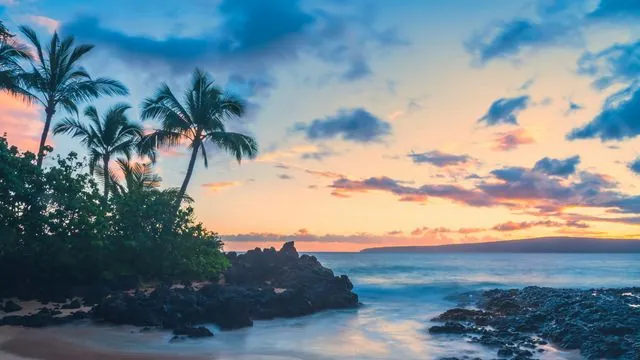
Groundbreaking Research Unveils the Secrets of Iron's Role in the Pacific Ocean's Climate History
2025-08-26
Author: Wei Ling
Unlocking the Ocean's Secrets: The Power of Iron
A revolutionary study from the University of Hawai‘i at Mānoa has uncovered the vital role iron has played in shaping Earth’s climate over the last 93 million years, particularly in the South Pacific Ocean. By analyzing deep-sea sediment cores, scientists provide unprecedented insights into how varying sources of iron have influenced marine ecosystems and atmospheric carbon dioxide levels.
Why Iron Matters for Marine Life
Iron isn't just any mineral—it's a crucial nutrient for marine life, directly impacting the growth of phytoplankton, which absorb significant amounts of carbon dioxide. Despite the established significance of iron today, the historical fluctuations in its availability and impact on ocean life have remained largely unknown until now.
A Dive into Deep-Sea Sediments
To delve into the history of oceanic iron, researchers meticulously examined iron isotopes from three deep-sea sediment cores sourced from the South Pacific, areas well-distanced from land influences. According to lead author Logan Tegler, the findings unveil five primary iron sources that have shaped the region: dust, distant oceanic sources, two types of hydrothermal vents, and volcanic ash. These contributions have evolved over time, showing a significant shift from hydrothermal dominance to dust as the main source around 30 million years ago.
Iron’s Impact on Ecosystems and Climate
The findings heighten our understanding of how iron has sculpted marine ecosystems across millennia. Tegler notes that low iron availability can favor specific microbes that thrive under conditions of scarcity, like diatoms, highlighting the complexity of life forms influenced by nutrient availability. In many areas of the Pacific, iron scarcity limits phytoplankton growth, constraining the ocean's ability to sequester carbon dioxide from the atmosphere.
Surprising Insights into Modern Iron Levels
In an unexpected twist, Tegler points out that despite traditionally low dust deposition in the South Pacific, current data indicates the region is receiving more dust than it has seen in the last 90 million years. This revelation challenges existing perceptions of the area as being iron-poor.
Navigating the Future: Human Impact on Iron Cycling
This essential research not only enhances our understanding of iron cycling across the Pacific but also emphasizes the importance of historical insights in addressing contemporary challenges. Tegler warns that as human activities increasingly introduce iron into oceanic systems through industrial emissions and biomass burning, grasping the historical fluctuations of the iron cycle becomes crucial for predicting and mitigating potential adverse effects.


 Brasil (PT)
Brasil (PT)
 Canada (EN)
Canada (EN)
 Chile (ES)
Chile (ES)
 Česko (CS)
Česko (CS)
 대한민국 (KO)
대한민국 (KO)
 España (ES)
España (ES)
 France (FR)
France (FR)
 Hong Kong (EN)
Hong Kong (EN)
 Italia (IT)
Italia (IT)
 日本 (JA)
日本 (JA)
 Magyarország (HU)
Magyarország (HU)
 Norge (NO)
Norge (NO)
 Polska (PL)
Polska (PL)
 Schweiz (DE)
Schweiz (DE)
 Singapore (EN)
Singapore (EN)
 Sverige (SV)
Sverige (SV)
 Suomi (FI)
Suomi (FI)
 Türkiye (TR)
Türkiye (TR)
 الإمارات العربية المتحدة (AR)
الإمارات العربية المتحدة (AR)